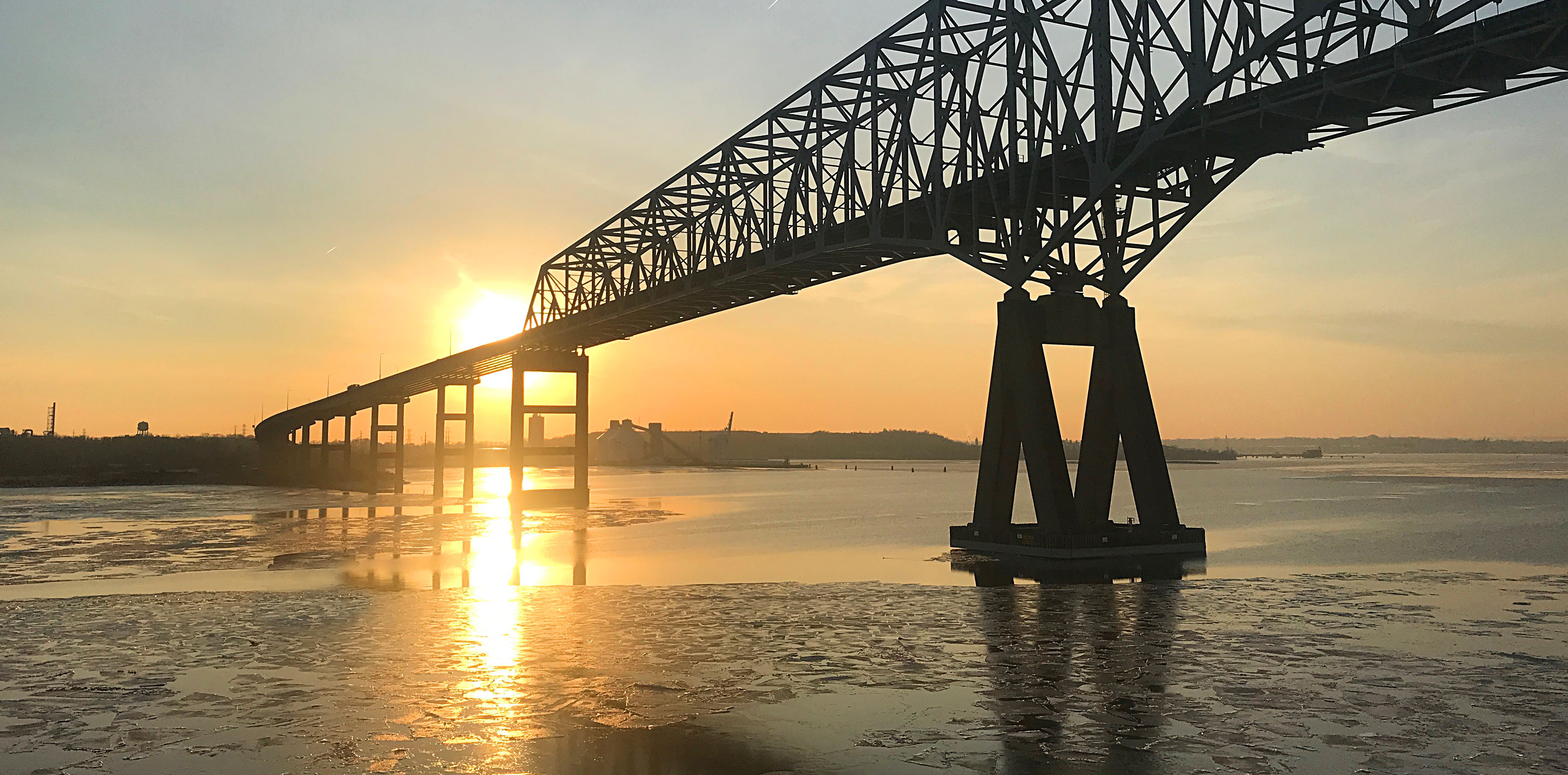
This story originally published in March of 2021 in celebration of the Francis Scott Key Bridge's 44th anniversary. Its history has since taken a tragic turn with the bridge's collapse on March 26, 2024. You can read more about the reaction to the 2024 collapse from the civil engineering community here.
This week in civil engineering history: The final link in Interstate 695 (Baltimore Beltway) is completed with the opening of the Francis Scott Key Bridge on March 23, 1977.
Baltimore’s Francis Scott Key Bridge (not to be confused with the 1923 bridge of the same name in Washington, D.C.) is the outermost of three major Patapsco River crossings at Baltimore Harbor. Paralleling the earlier (1957) Baltimore Tunnel and later (1985) Fort McHenry Tunnel, the crossing was originally conceived as a tunnel between Hawkins Point and Sollers Point in the outer harbor. The design was changed to a bridge when tunnel construction bids proved too costly in 1970. Benefits offered by a bridge as compared with a tunnel, were the opportunity for additional travel lanes, lower operational and maintenance costs, and to provide an alternate route for vehicles containing hazardous materials, which are prohibited in the tunnels.
Construction began in 1972 and the bridge was opened to traffic on March 23, 1977. Including its connecting approaches, the total project length encompassed a 10.9-mile corridor. The bridge itself, with a total length of 8,636 feet, is a steel arch-shaped continuous-through-truss bridge structure that combines the behaviors of an arch, truss, and cantilever. With a main span of 1,200 feet, it was the second longest continuous-truss bridge span in the world when constructed and remains the second longest in the United States and third in the world.
Originally known as the Outer Harbor Crossing, the bridge was renamed after Francis Scott Key, author of “The Star-Spangled Banner.” Historians believe that the bridge passes within 200 feet of the location in the harbor where Key was detained on a cartel boat when, during the bombardment of Fort McHenry, he was inspired to write the words of the song that became the U.S. national anthem.
Reuben Hull, P.E., PMP, M.ASCE, is civil regional manager for LaBella Associates in Albany, New York, and a self-made historian who has penned numerous articles on civil engineering history. An active ASCE member, Hull is a corresponding member and former chair of the History and Heritage Committee, serves as vice president of the Mohawk-Hudson Section, served as president of the New Hampshire Section, 1999-2000, and was named New Hampshire Young Engineer of the Year in 1997.
Follow his daily Civil Engineering Almanac series on Twitter: @ThisDayInCEHist.



